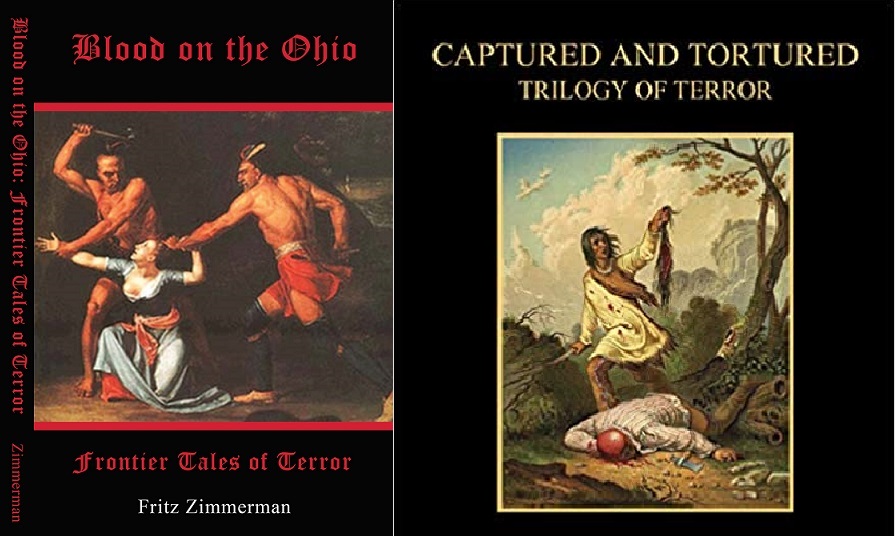Discovering Miami Indian Chief, Little Turtle's Grave in Ft. Wayne, Indiana
We herewith give the account of the finding of the grave as related by Mr. J. M. Stouder, of whom we will have more to say later. The date of the discovery will hereafter be of interest to the citizens of Fort Wayne and Allen County, and indeed, to all persons interested in the early settlement of the Northwest Territory. The Lockner brothers soon found a number of Indian skeletons in digging out the cellar, which was, no doubt, the last burying ground of the Miamis at Fort Wayne. Noticing that whatever was in the graves was appropriated by the laborers, the contractors called off the crew, and with the assistance of Dr. George Gillie proceeded to finish the cellar and to dig the drain for the same. In this cellar drain the grave of Little Turtle was found. The tinders had no idea of the identity of the body. About the neck of the chief was found the string of silver beads and crosses, and in the few remaining tufts of hair on the back of the skull was the string of white shell beads. The hair was also tied with a buckskin thong, and from the description given by the Lockner brothers, was well preserved. The vermilion plaits were beneath the Chieftain's knees, the silver armlets on his arms, and the anklets and the famous sword, guns and remnants of the pistols were at his side. The various other implements had been placed in different parts of the grave and had probably become disarranged in the digging of the drain. On the breast were the silver disks believed to be medals. They were fastened together by means of a buckskin thong and are shown in the collection just as they were found. About a month later Mr. J. M. Stouder had occasion to visit the house of Albert Lockner and asked to see the Indian relics that he knew he had in his possession as he always was interested in such discoveries. He was immediately struck by the apparent wealth and the importance of the find and began an investigation as to the identity of the remains of the person in the grave. Early in his research work he became convinced that Albert and Charles Lockner and Dr. Gillie had discovered the grave of Little Turtle. He says that he was greatly indebted to Miss Eliza Rudisell, Mr. Howard Hanthorn and Mr. Charles Warden for the assistance they gave him in identifying the grave of the greatest chief of his time. The articles taken from the grave are: Eight silver bracelets; two silver anklets; one heavy metal bracelet; three silver medals : four silver brooches ; one pair of silver earrings ; six pendants ; one string of silver beads ; twenty-three silver crosses each one inch long; one sword, which we are certain is that presented to the Chief by General George Washington ; one string of white silver beads; four metal buttons; one small pocket knife; one large clasp knife of very odd design; one drinking cup; one metal spoon ; one pair of shears; one hammer; one gun barrel, from which rotten portions of the stock fell when it was lifted from the grave ; one pair of bullet molds ; one flint lock; the remains of a pistol; three large knives; one pair of steel spurs ; one ax ; one tomahawk ; and copper kettle con taining, when found, beans and corn, which went to a fine powder when exposed to the air. We are satisfied that the grave of no ordinary Indian would have contained this costly and various displays of riches, and that this is undoubtedly an accidental and genuine find of the remains of Little Turtle. W. D. Schiefer, of the Schiefer Shoe Store, says that while he resided on the old Barnett place in 1875 a man named Hedges, who had been present at the burial of Little Turtle, had pointed out to him the exact location of the grave, as well as he could remember, without any suggestions from anyone. Although he had not been in the locality since Spy Run had been laid out, Mr. Schiefer located the spot within one hundred feet of the place where the grave was uncovered. The standing of Mr. J. M. Stouder, a hardware dealer at 122 East Columbia St., Fort Wayne, IND., who identified the grave and its remains, preserved the relics and marked the spot at his own expense for all time, is high. Too much credit cannot be given this man. In justice to historical facts relating to the find and identity of this long-lost grave, it is said,
"That Mr. The studio is an almost lifelong citizen of Fort Wayne, that he is regarded by his fellow townsmen as a straightforward, upright, enterprising citizen. He is a member of high standing in the Free Mason Lodge, highly esteemed by all who know him." This discovery is regarded as genuine by the people of Fort Wayne and vicinity, as well as by all scientific and historical experts, who have seen fit to investigate this most remarkable and important discovery, historically considered, of recent times.




